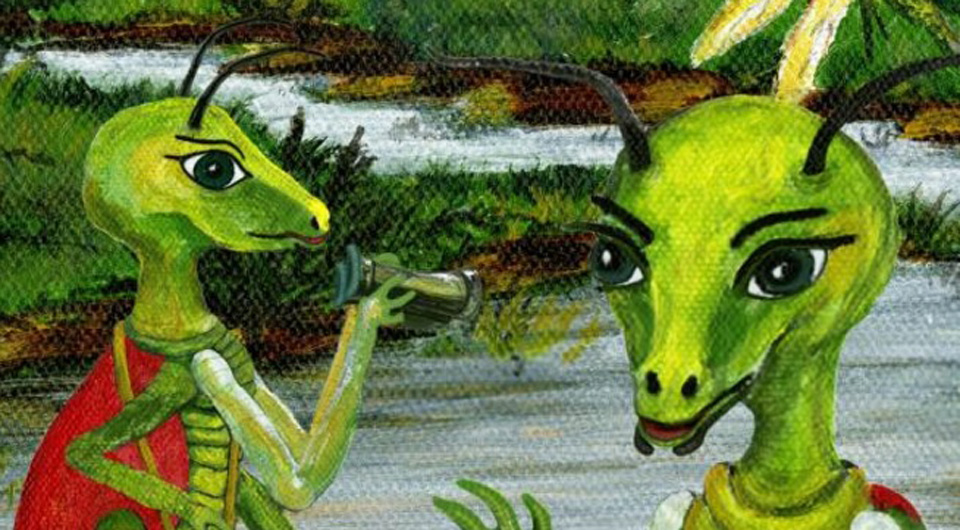
There are a number of tests of a good read. Does the opening action pull you into the story? Do you care for the characters? Do their machinations have some relevance to your life? Do you find yourself with ever-longer stints with the read? Do you talk about the book with family, neighbors, and workmates? A Hundred Lifetimes has all of these.
I have one more test to add. Does your partner “steal” the book from you? The latter happened to me with A Hundred Lifetimes. Once I stole the book back, I discovered that other important criteria of a good read. A Hundred Lifetimes has levels that appeal to varied interests and age groups.
Like all good fiction, and in this case science fiction, it is replete with solid, accurate nonfiction. In a word, you learn as you are entertained in Brechtian fashion. Author David Zink’s background in science, particularly biology, geography, and his work experiences in forestry, is a real plus here.
The book’s Venusian world
The main characters, as depicted in a strikingly colorful book cover, are praying mantises. Their developmental life stages, called instars, and their fascinating mating/reproductive cycle are detailed yet easily grasped by the non-science reader.
The author deftly blends a number of approaches to help the reader navigate a Venusian world. The detailed map helps Earthlings orientate to its continents e.g. Ishtar, and its various seas. Time is expressed in Earthling terms.
There is a four page glossary to help with both real science terms and a fictitious Venusian vocabulary such as kecks – a unit of currency. Some Venusian words sound like what they mean. “Let’s take the zoom.”
At the same time, the main characters reflect real planet earth struggles and human emotions. For example, when the main characters, Zyzz and Zilla, are confronted with Cold War-like retribution for their participation in an environmental cause, their main concerns are for their children and keeping the family together. Here’s where the author’s involvement in environmental struggles is a plus.
Climate change issues
Climate and climate change play a big role here. Lifetimes shows how feedback loops add an accelerant to an already exponential rise in global temperatures. The loss of glaciers is an example. They reflect back radiation from the sun. As they melt, the exposed earth, or exposed Venus, absorbs more radiation that raises planetary temperatures which, in turn, melts more ice. Qualitative change lurks around the corner.
How relevant is this? The Obama initiative to thwart climate change, called the Clean Power Plan, has just entered the D.C. Circuit Court of Appeals. The November election and continued mass protests fighting fossil fuel pipelines, especially in North Dakota and Connecticut, will decide if the country is about to shift to solar and other renewable resources, which the Obama plan leads to in a massive way.
Epigraphs, those wonderful quotes at the beginning of chapters, when adroitly done, can frame a chapter for the reader. The author generates these at his creative best. My favorite is,
It is in teaching others that a teacher teaches herself – Thlargi proverb.
While written by Venusians, earthlings will relate. The Thlargi are one of the two advanced races of Venusian mantids, defeated in a genocidal war and restricted to ghetto-like reservations by the other group, the Drelbi.
How would I characterize A Hundred Lifetimes? It is Avatar on steroids. Lifetimes is more nuanced. For example, it considers a varied, and at times, confused political left. It addresses unity and the dire consequences of disunity.
As leftist Venusians were rounded up, my thoughts shot to Germany in the early 1930s and the inability of the Communist Party and social democrats to get it together. It was an easy connect to the USA 2016, and the threat of the extreme right, in the personage of Donald Trump’s campaign for the presidency. Will Green Party and Libertarian Party supporters weigh the history and see the danger?
No easy answers
Lifetimes somehow avoids the Hollywood ending yet offers its own version of hope. I can envision A Hundred Lifetimes as a great animated film for all ages. Any screenwriters out there?
Left writers are delving into environmental issues with genres such as Zink’s science fiction and the relatively new literary category of creative nonfiction. The question is, will political Left publishing houses catch up and consider these avenues to reach people hungering for progressive change?
A Hundred Lifetimes evokes a clarion call by another biologist and writer decades ago. “I believe that the more clearly we can focus our attention on the wonders and realities of the universe about us, the less taste we shall have for destruction.” Rachel Carson, The Real World Around Us (1954).
If you want to escape planet Earth but not leave the real, complex struggles to solve its many challenges, A Hundred Lifetimes is for you.
A Hundred Lifetimes is only $14.95 in paperback and is available at Amazon.com: A Hundred Lifetimes (9781523270149)












Comments